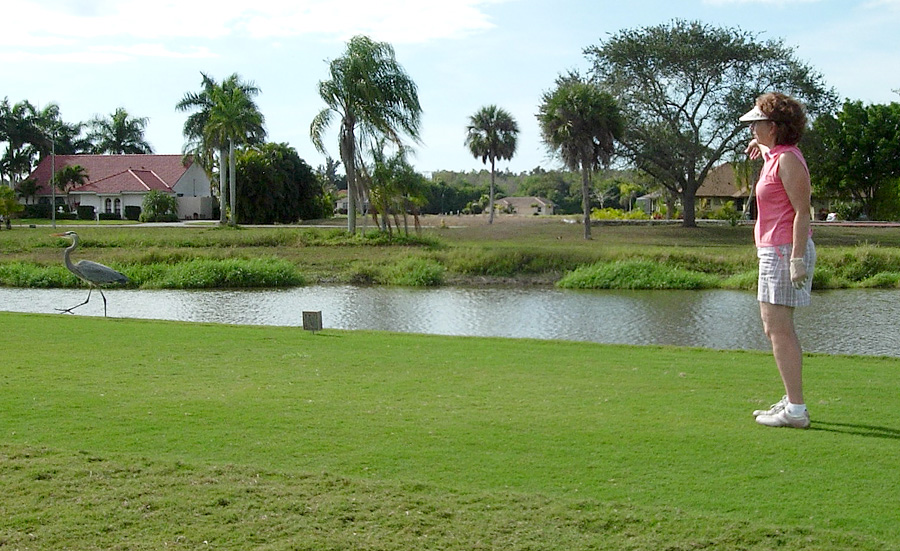
Alice directing a reluctant Great Blue Heron from the tee box to the pond
Alice and I spent two weeks in the Naples, Florida general area, playing lots of golf, touring natural areas to view flora and fauna, visiting with old friends, and making new friends. Although birding was not the primary reason for the trip, I did manage to see 84 bird species, and was able to photograph all but 3 of them. I was amazed by all the bird species at the ponds found in the golf courses, and their fearless attitude toward people. Also amazing was that I did not see (recognize) a single sparrow on the trip - all of the little brown birds (LBBs) that I could identify were warblers, and almost of them were Palm Warblers. I did see one LLB that I could not identify, and will discuss it later in this posting. My only disappointment was that I only had a small pocket camera with me while playing golf, and I either missed a few great shots or only got poor quality photos compared with my usual birding camera and lens. I have included only some of the interesting trip photos in this posting, and as time permits, I plan to add these and additional trip photos to my Florida wildlife photo web pages.

Alice directing a reluctant Great Blue Heron from the tee box to the pond
It seemed that there were Anhingas and Double-crested Cormorants wherever we were in the greater Naples area. They were sitting in trees and calling out, fishing in the ponds and lakes, or drying their wings in the sun.

Male Anhinga
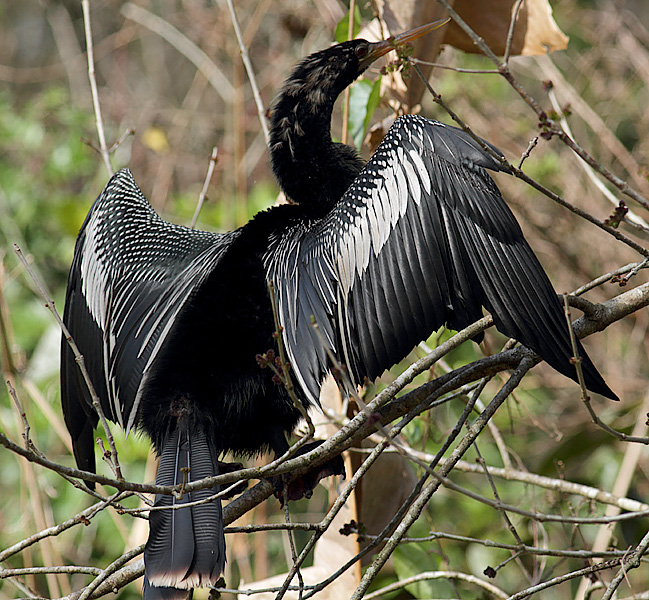
Male Anhinga
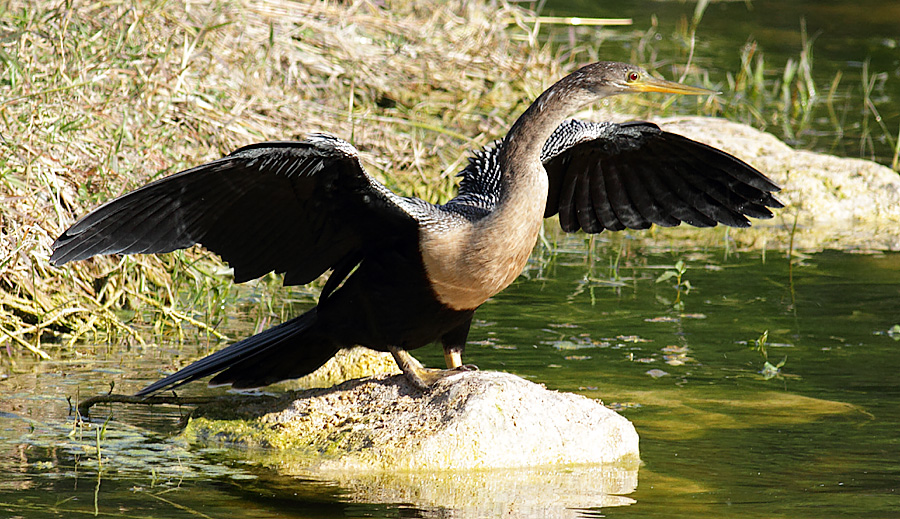
Female Anhinga
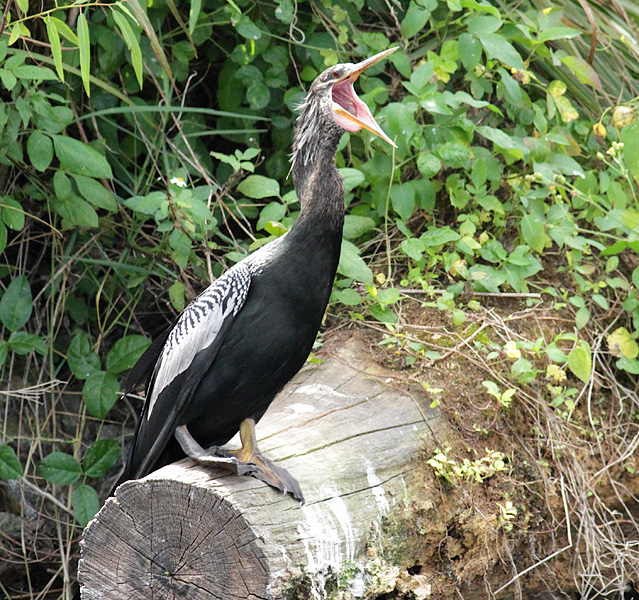
Anhinga
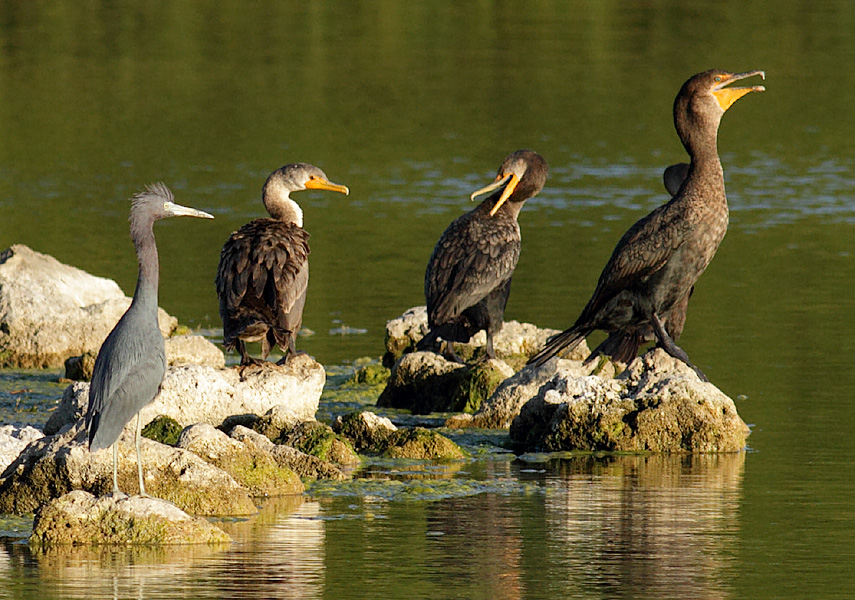
Double-crested Cormorants with a Little Blue Heron
The herons and egrets were plentiful and spectacular. White Ibises foraged in flocks on the golf courses, and I twice saw a flock of Glossy Ibises heading toward the sunset. The only wading bird species that I only saw one time was a Reddish Egret.
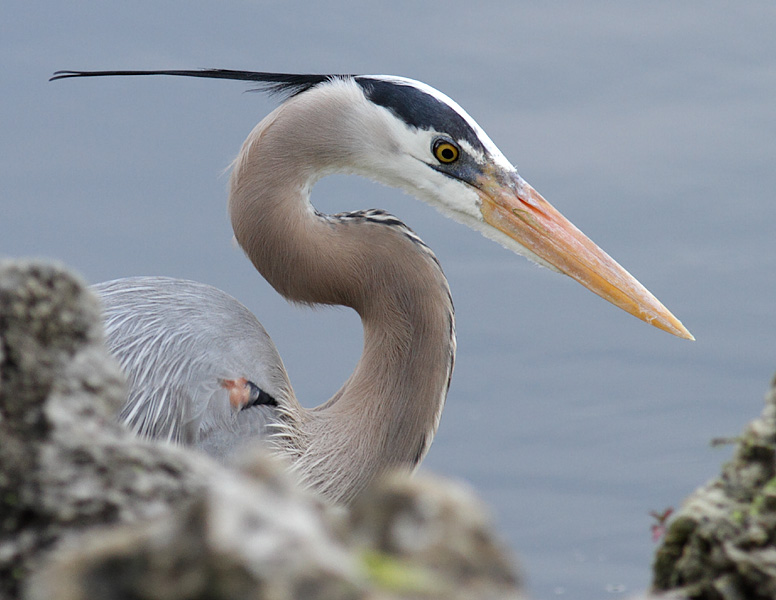
Great Blue Heron

Little Blue Heron
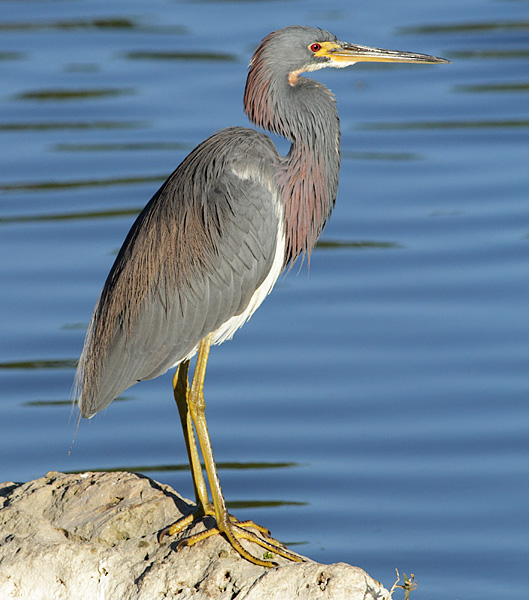
Tricolored Heron
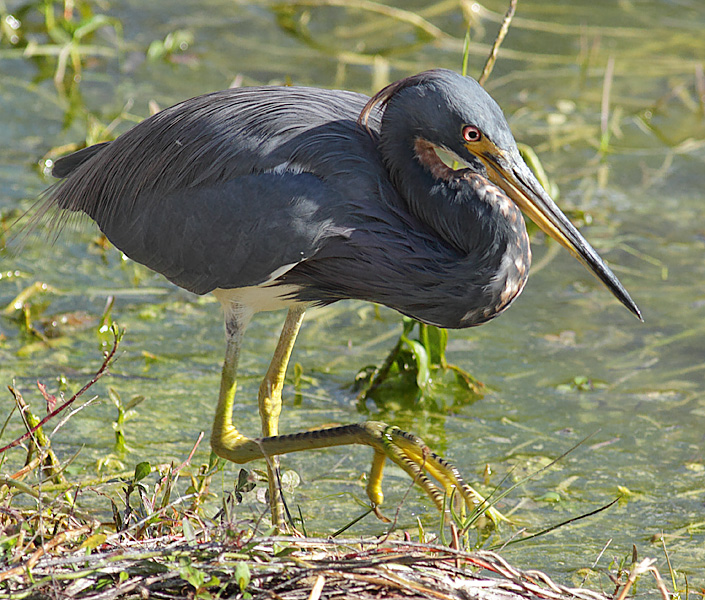
Tricolored Heron
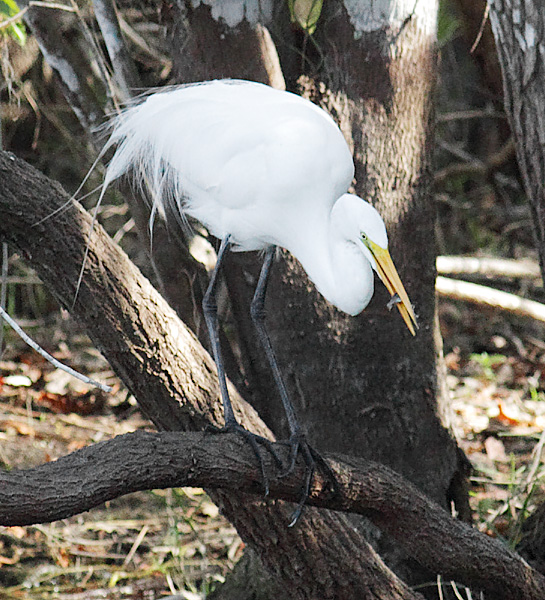
Great Egret

Snowy Egret
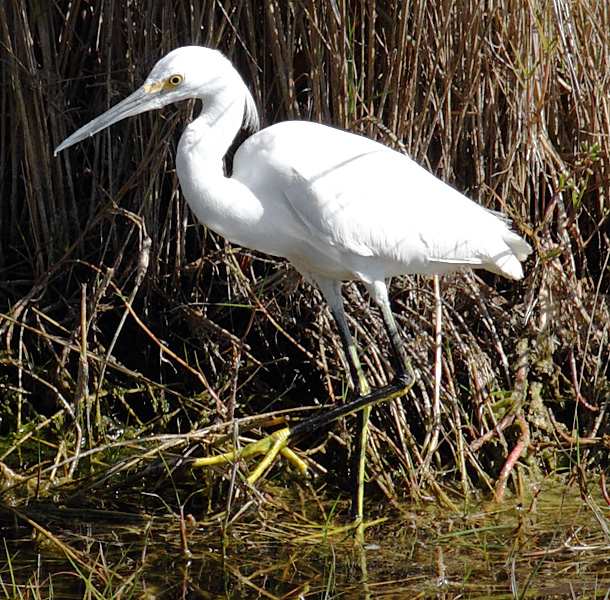
Snowy Egret

Reddish Egret
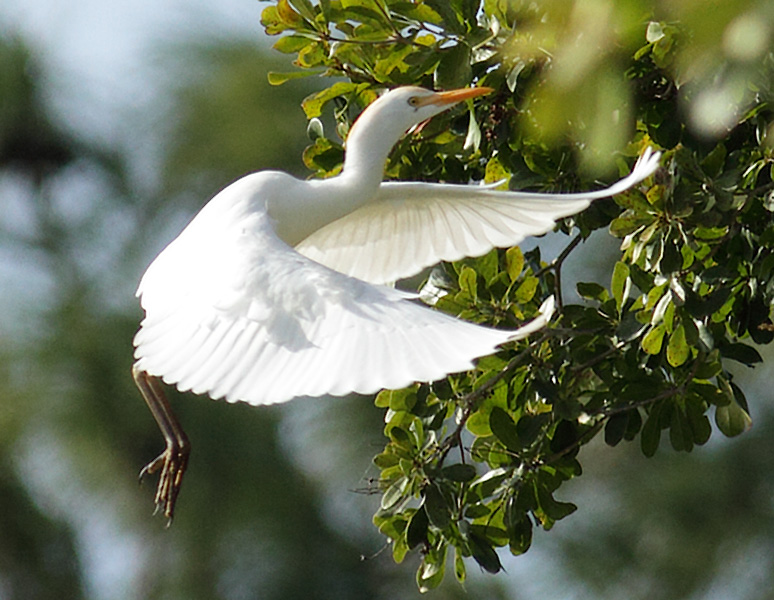
Cattle Egret
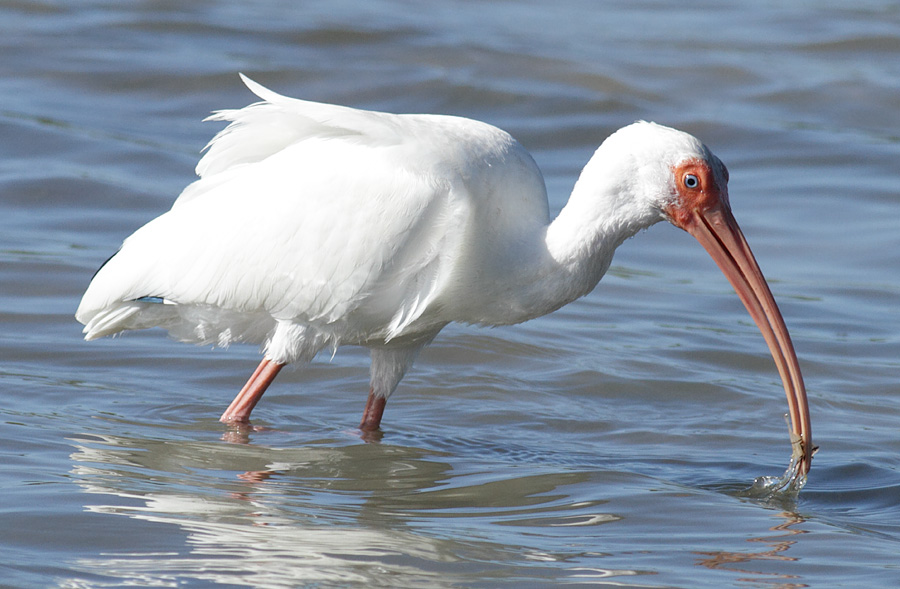
White Ibis
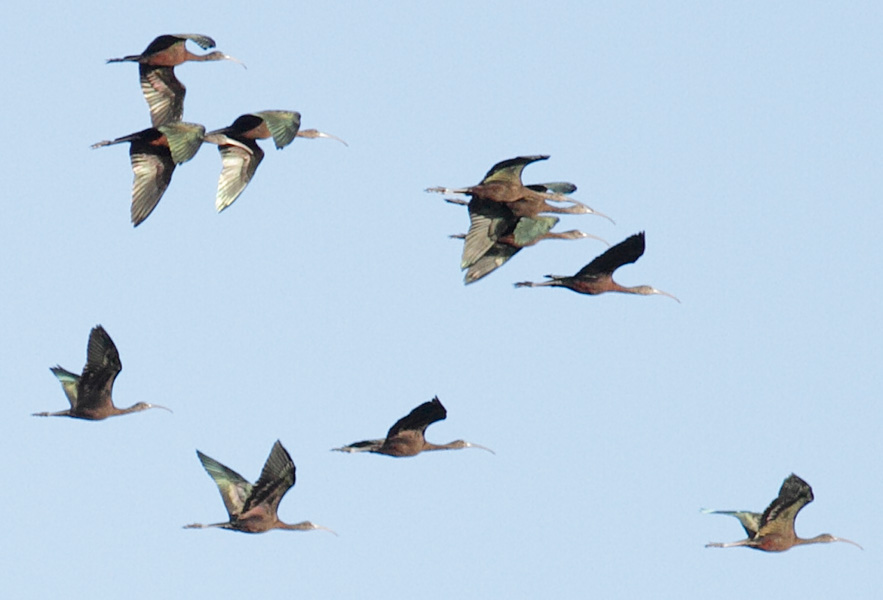
Glossy Ibises
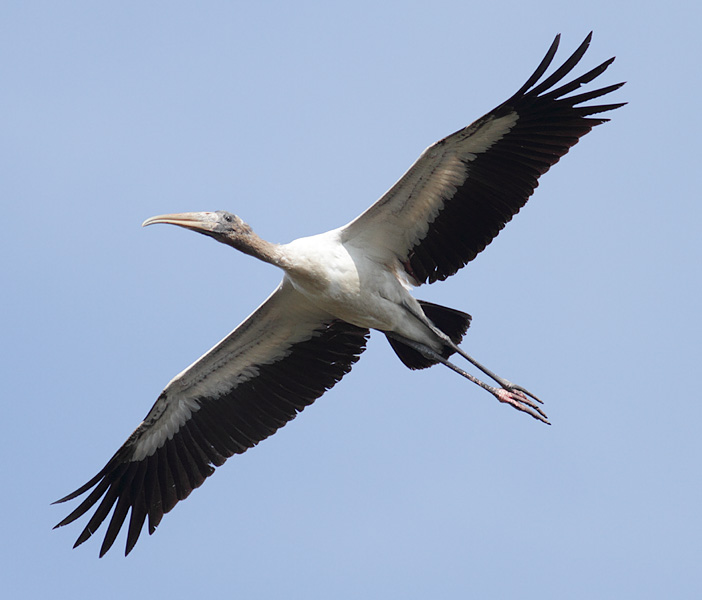
Wood Stork
The most common hawk I saw was Red-shouldered - the Florida subspecies is much paler than those I see here in Virginia, especially their gray heads. I saw a number of American Kestrels, one of which sat on top of a roof steeple late each afternoon where we were staying, and on one occasion, chased a Cooper's Hawk away from its territory.

Red-shouldered Hawk

Red-tailed Hawk

Cooper's Hawk
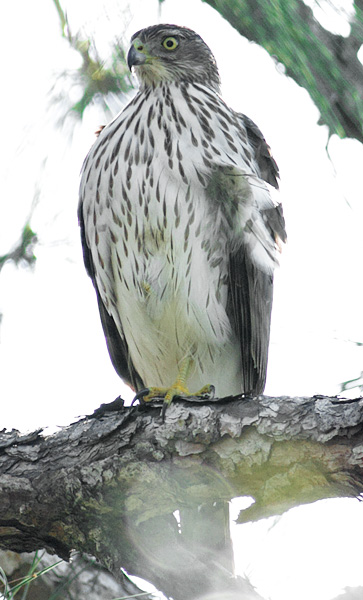
Juvenile Cooper's Hawk

American Kestrel
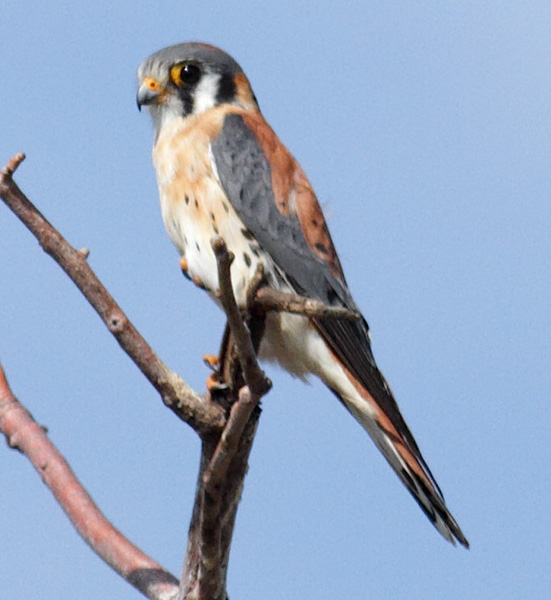
American Kestrel
There were lots of waterfowl in the ponds.
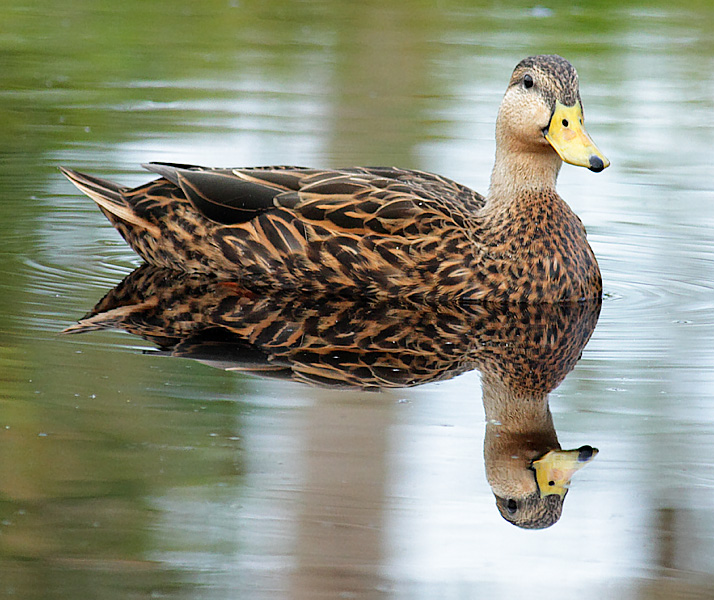
Male Mottled Duck
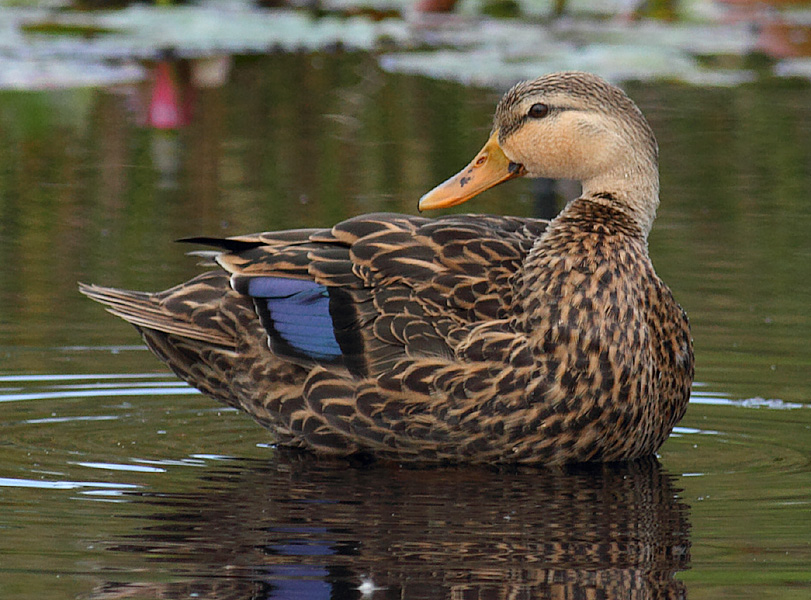
Female Mottled Duck
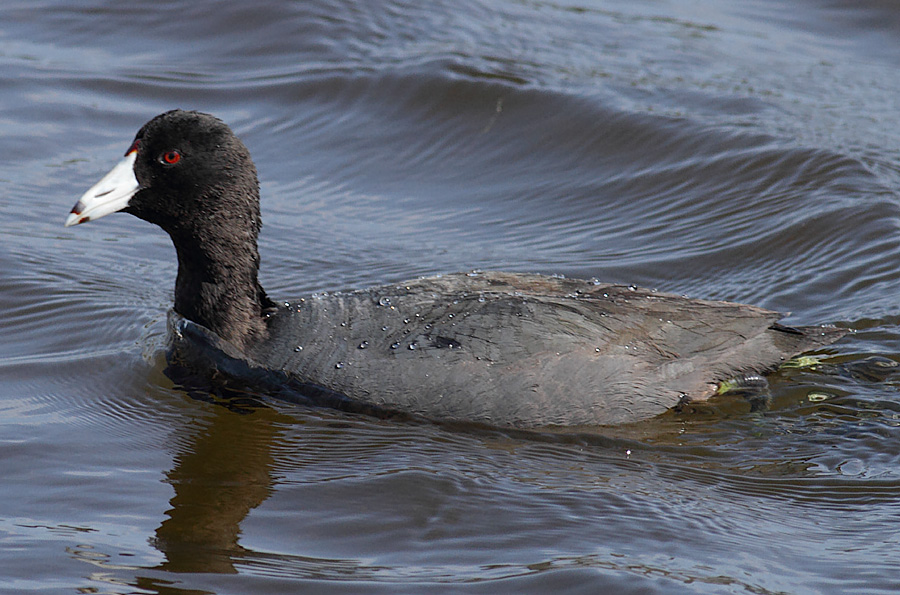
American Coot

Common Gallinule
Of all the golf courses we played, Eagle Lakes on highway 41 was the most productive for seeing birds. The course was located only a few miles west of the official Everglades preserves. In addition to egrets, herons, alligators, and a number of other species, I saw two Sandhill Cranes, a Limpkin, and a Spotted Sandpiper. Two of my photography disappointments were on this golf course. On one occasion, we saw a Bald Eagle chasing an Osprey that had just caught a fish, finally getting the Osprey to drop the fish - all of this was going on less than 50 to 100 yards away from us, and I only got a few poor quality photos with my pocket camera.
The other one was by a course pond with a lot of brush around it. I heard what sounded like a Eastern Meadowlark, but could not see it. However, I saw the backside of a bird next to the pond that was streaked with black and dark brown with some pale stripes. By the time I got my pocket camera out, it flew up about five feet in the air and landed in the dense brush, where I no longer could find it. It is possible that it was a very dark Eastern Meadowlark, but a rail or snipe was also a possibility, as I could not be sure that what I had heard had come from this bird.
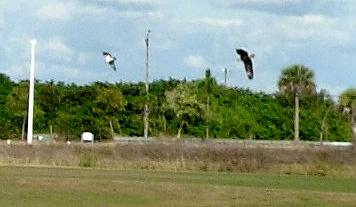
Bald Eagle chasing an Osprey

Sandhill Cranes

Limpkin
I spent several hours at Corkscrew Swamp, where one of my target birds there was a Painted Bunting. The staff had erected a few bird feeders that attracted this species, and I was not disappointed. I ended up with 20 species here.

Painted Bunting
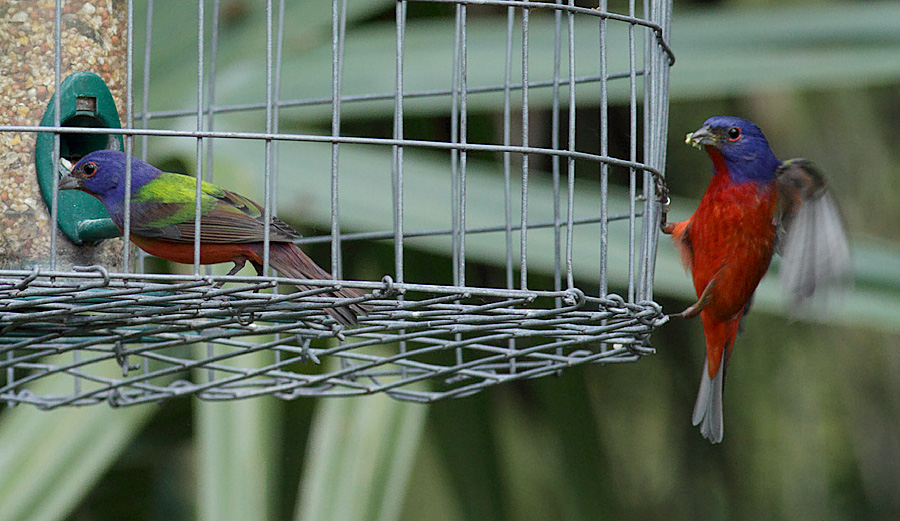
Painted Buntings
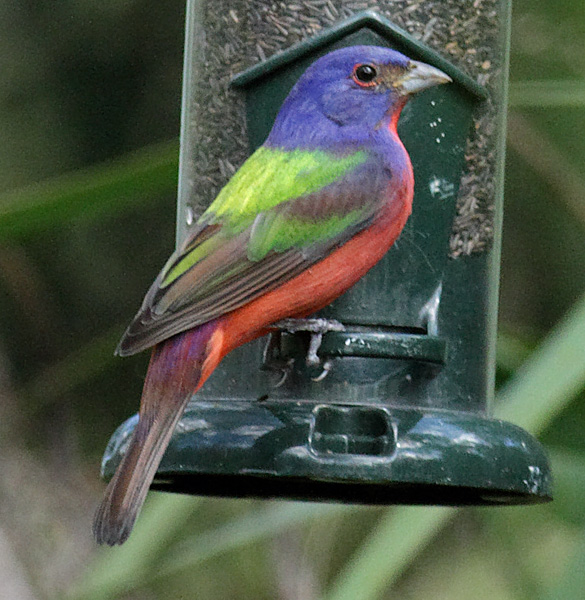
Painted Bunting
Alice and I drove along highway 41 into the Everglades one day. It seemed that there was a Belted Kingfisher sitting on almost every power line segment, and egrets, cormorants, and Anhingas were in the vegetation all along the highway. We made several stops: H.P. Williams Roadside Park, Kirby Storter Roadside Park, 10,000 Islands marsh trail, the visitor center next to the Dade-Collier Airport, and tried to get into the Shark Valley area, but the parking lot was full. However, as we turned around to leave the full parking lot, I stopped the car to photograph a white morph Great Blue Heron. We saw alligators at most of the stops, but the best place to see them was at the airport visitor center.
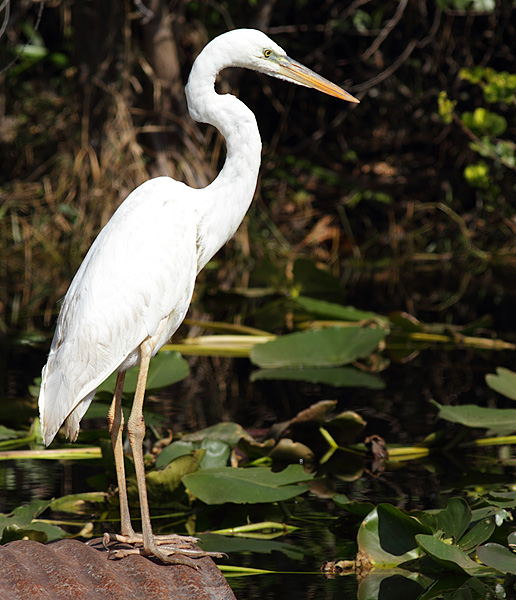
White morph Great Blue Heron
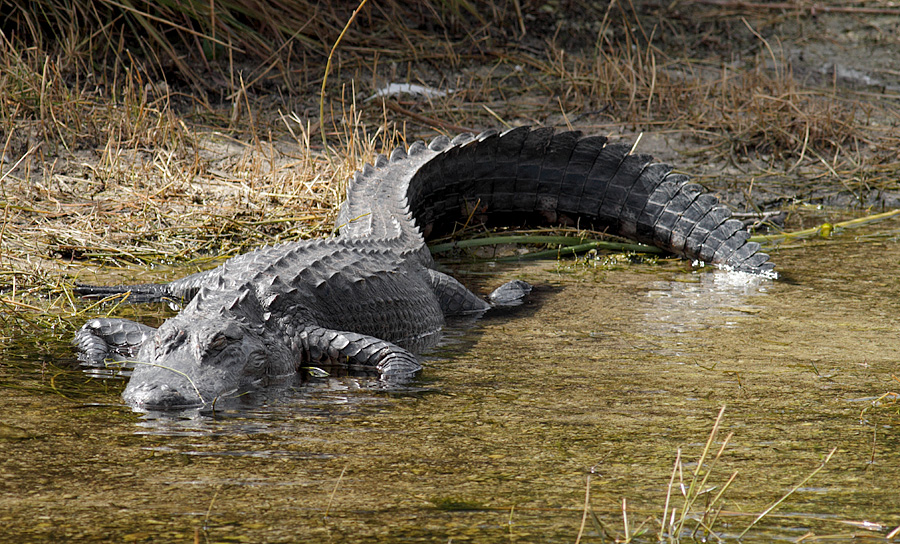
Alligator
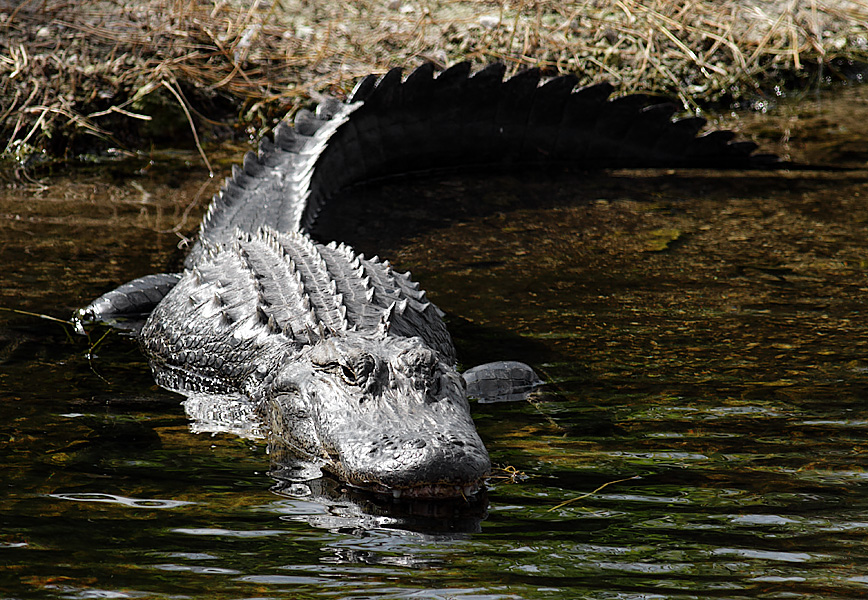
Alligator

A very cautious Snowy Egret
A trip to the Rookery Bay Reserve was a bit disappointing - we had expected to see lots of estuary birds, but most of the trail was inland. Perhaps seeing this reserve by boat would have been better. The highlights were a Yellow-crowned Night-Heron, and more than a thousand Tree Swallows - the sky was filled with them.

Yellow-crowned Night-Heron

Tree Swallows
We enjoyed a couple of trips to Tigertail Beach on Marco Island. Large flocks of shorebirds where there. Although I was not familiar with many of these shorebirds, and their non-breeding plumage made identification more difficult, I think that those shown here are correct, but would appreciate other opinions. There was an Osprey nest on this beach, and the Ospreys would eat fish they had caught on a post a few feet from the rental kiosk, and allowed my to get very close. Just a few blocks from the beach parking area, there was a large Bald Eagle nest, and also several Burrowing Owl locations - all marked on the local maps. I saw 30 species of birds on Marco Island.

A flock of shorebirds
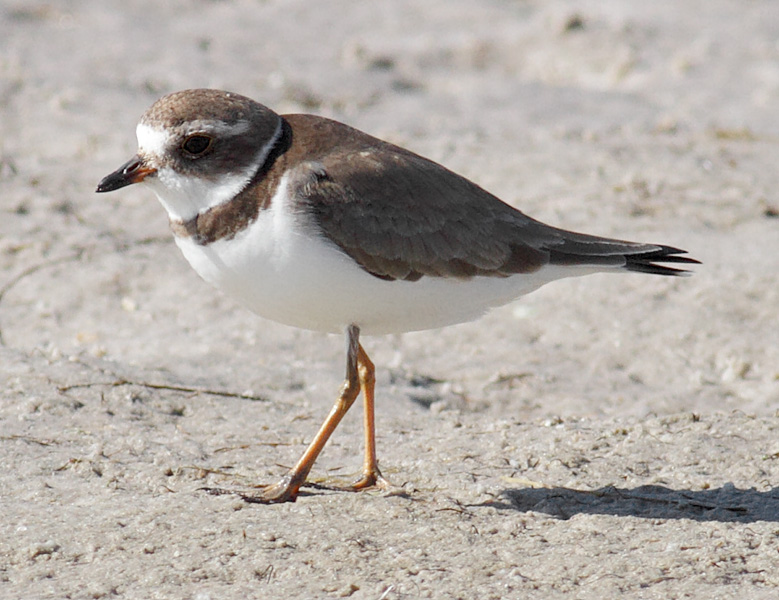
Semipalmated Plover
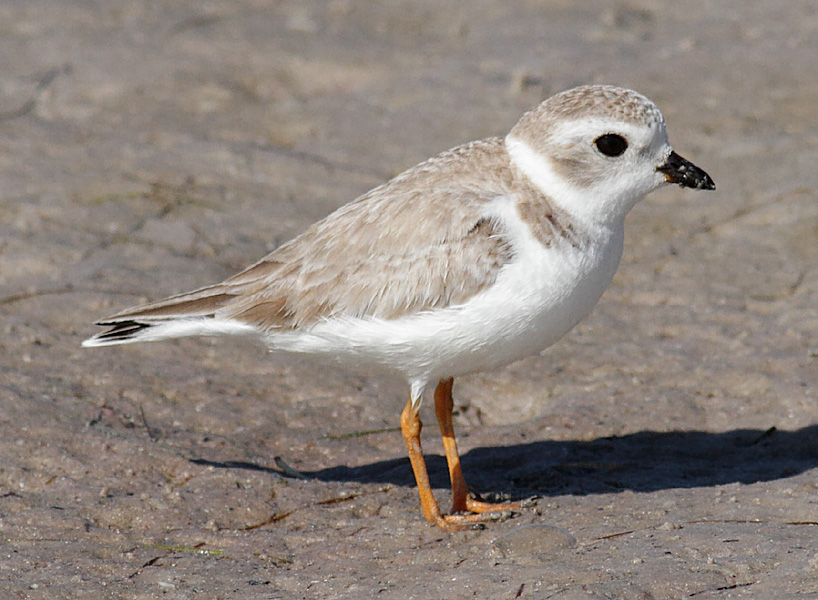
Piping Plover

Wilson's Plover
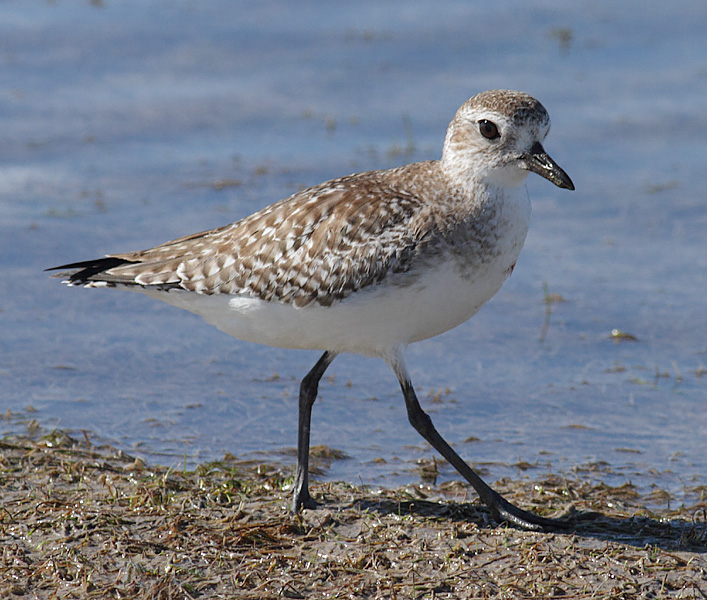
Black-bellied Plover
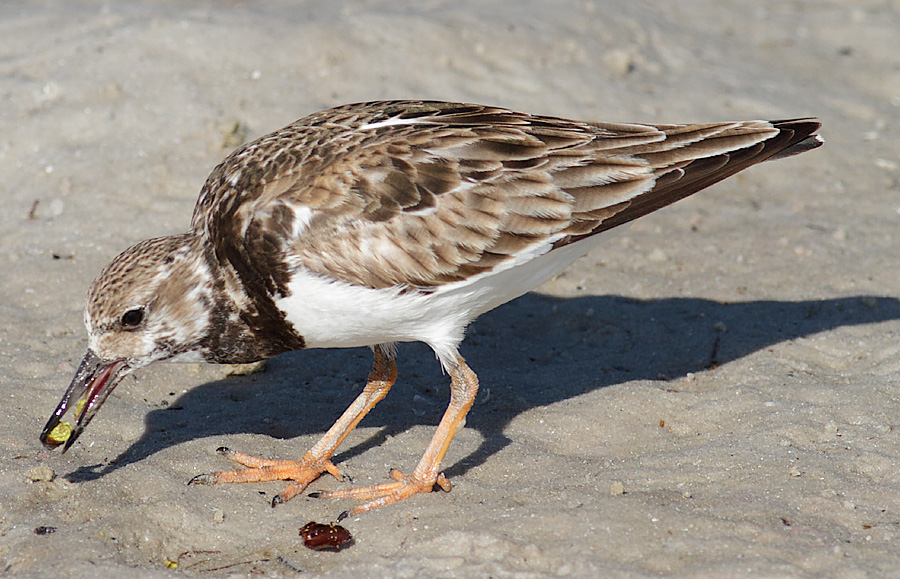
Ruddy Turnstone
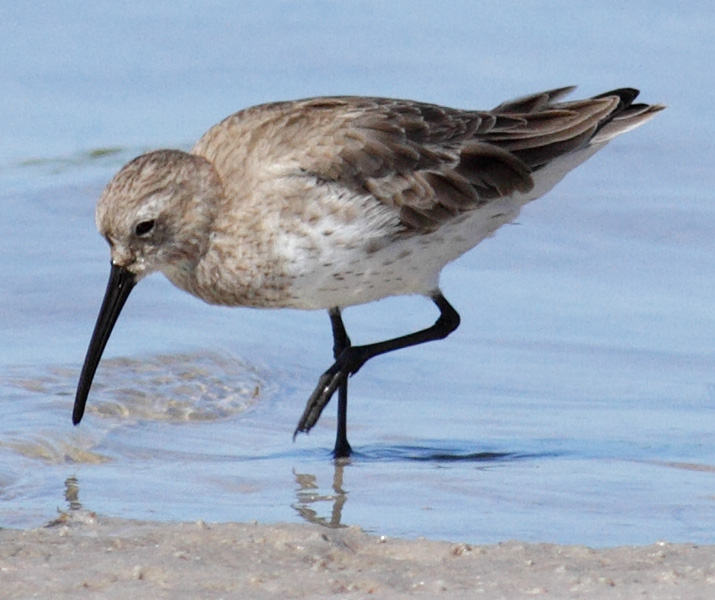
Dunlin
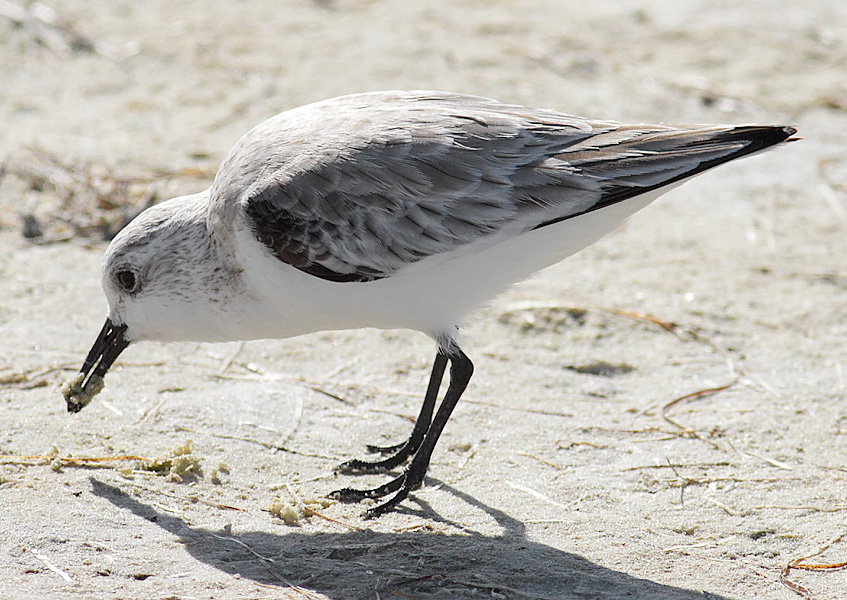
Sanderling
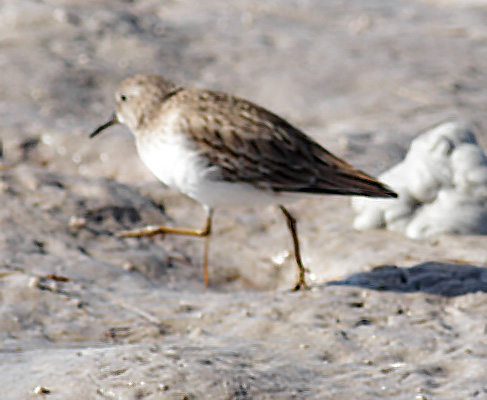
Least Sandpiper
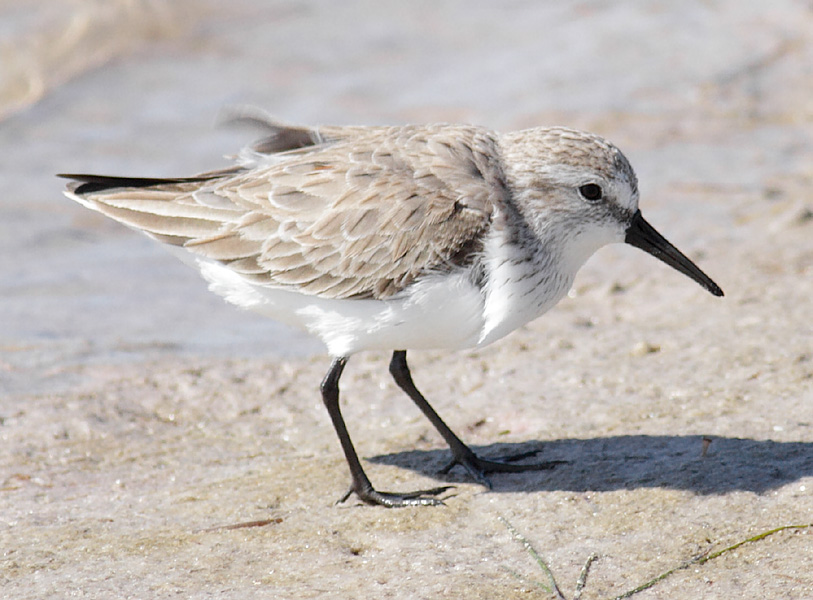
Western Sandpiper
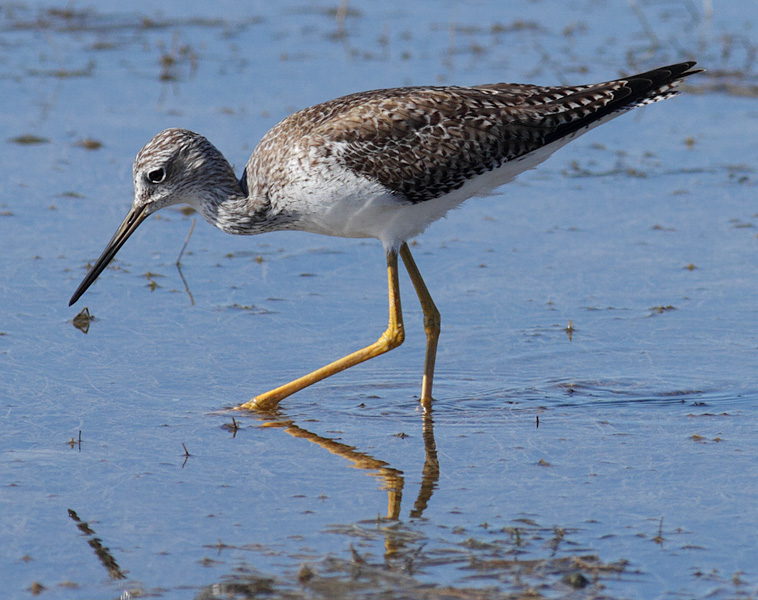
Lesser Yellowlegs
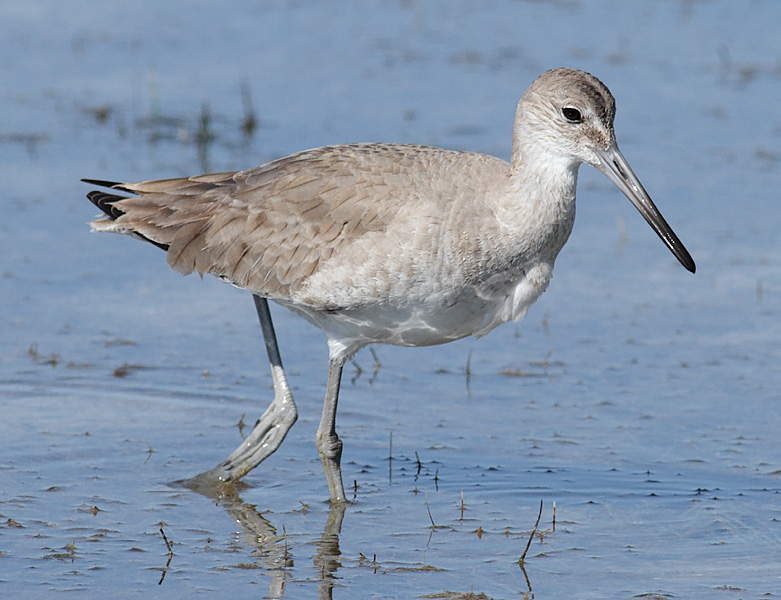
Willet
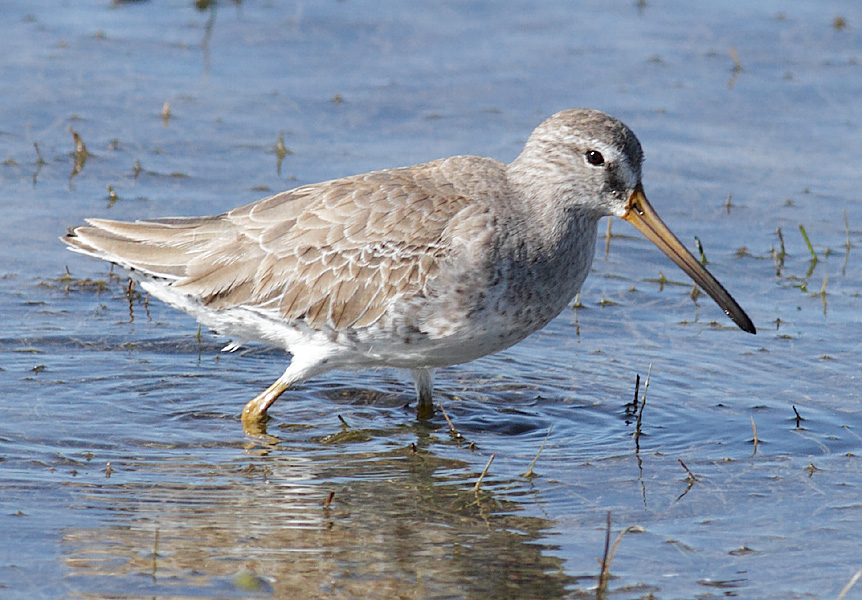
Short-billed Dowitcher
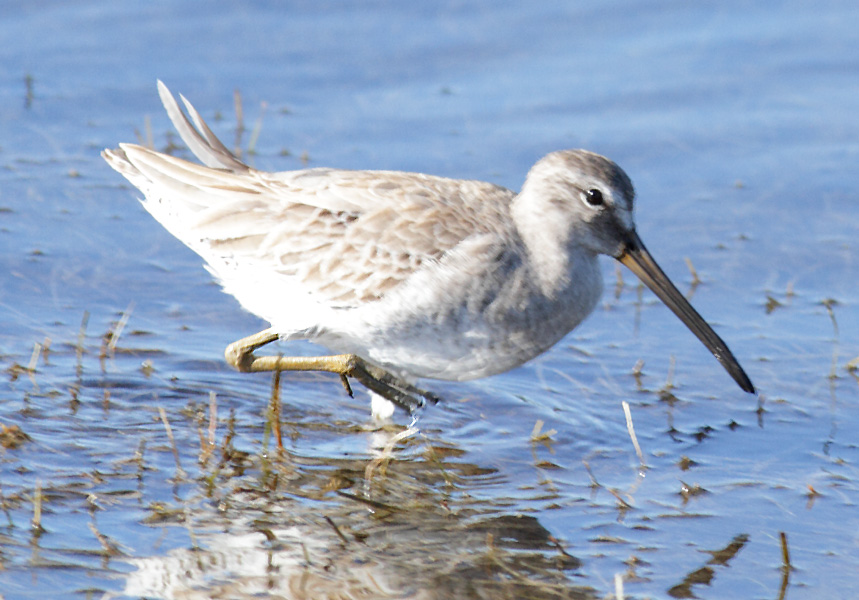
Long-billed Dowitcher
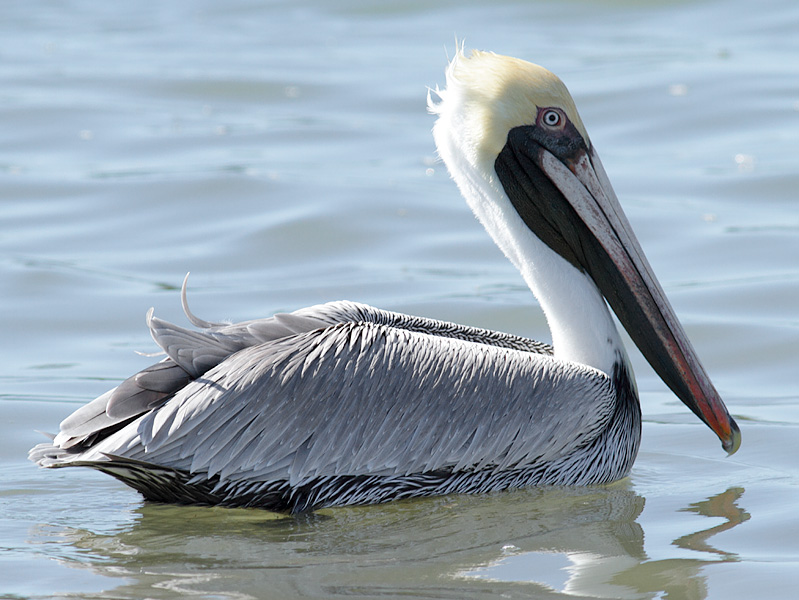
Brown Pelican

Osprey
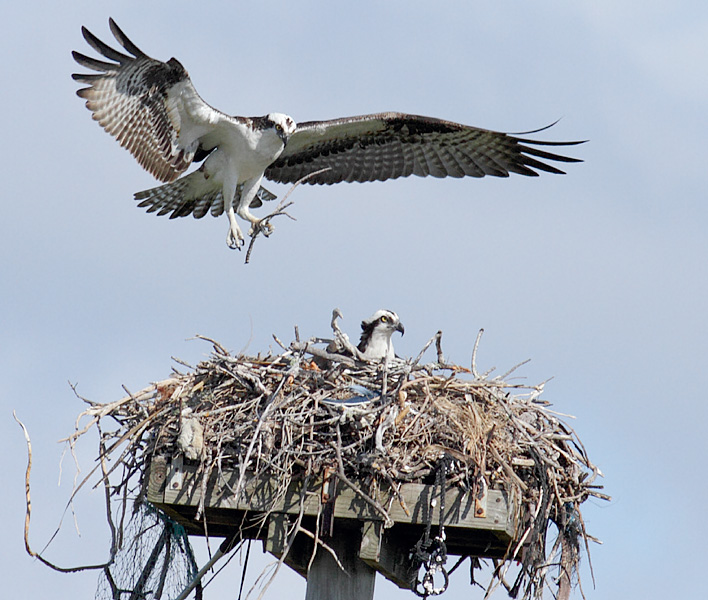
Osprey
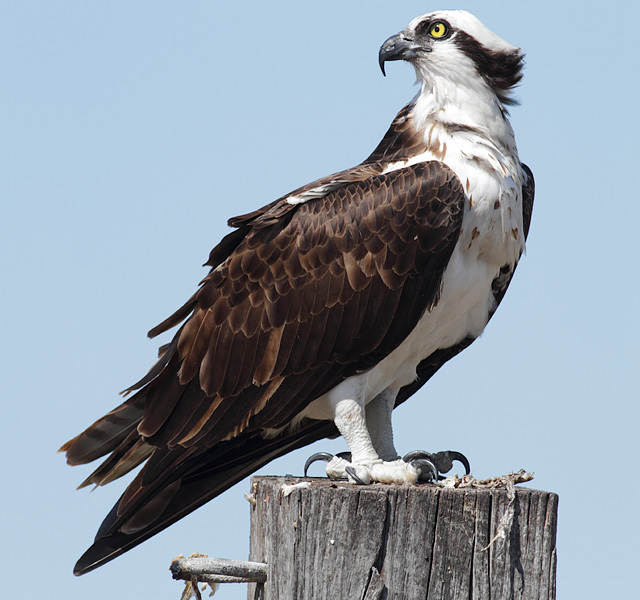
Osprey
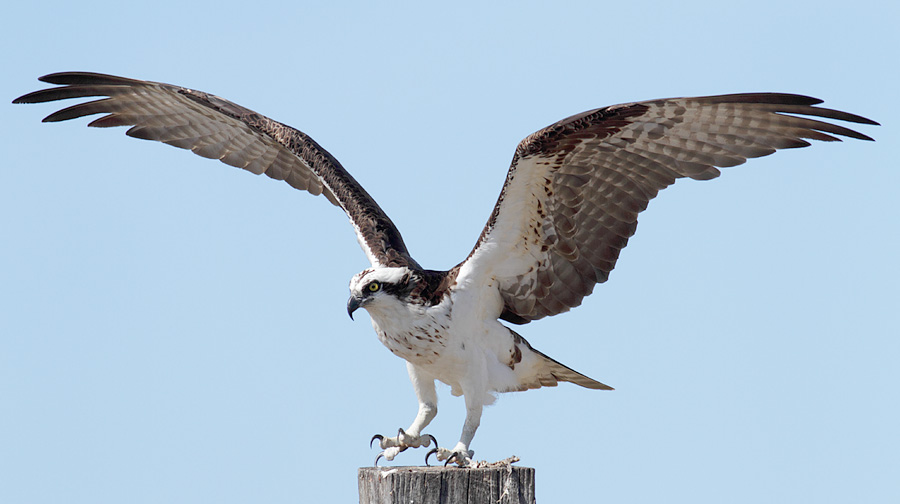
Osprey

Bald Eagle

Burrowing Owl
We also spent some time in the Naples Botanical Gardens where I saw a number of species of birds and other wildlife. Except for the heavily developed areas, there was abundant wildlife everywhere we went in the Naples area.
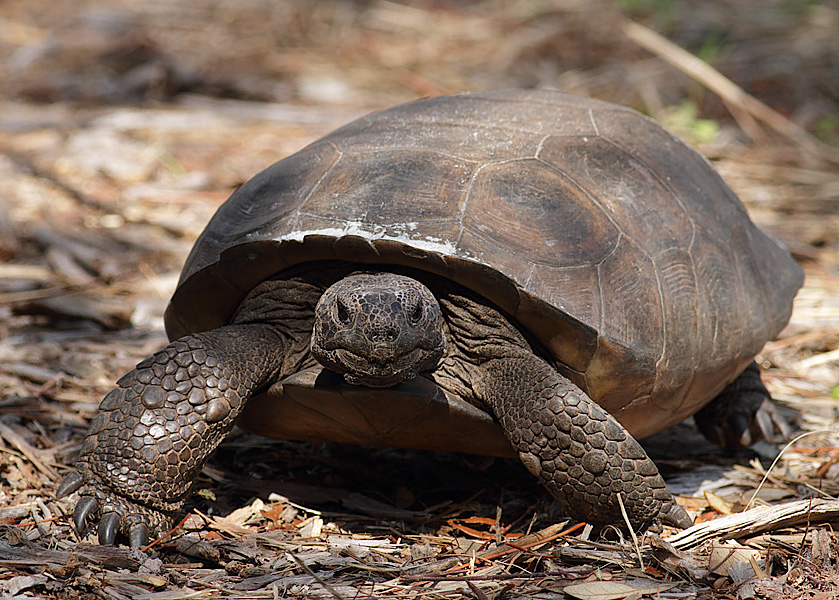
Gopher Tortoise
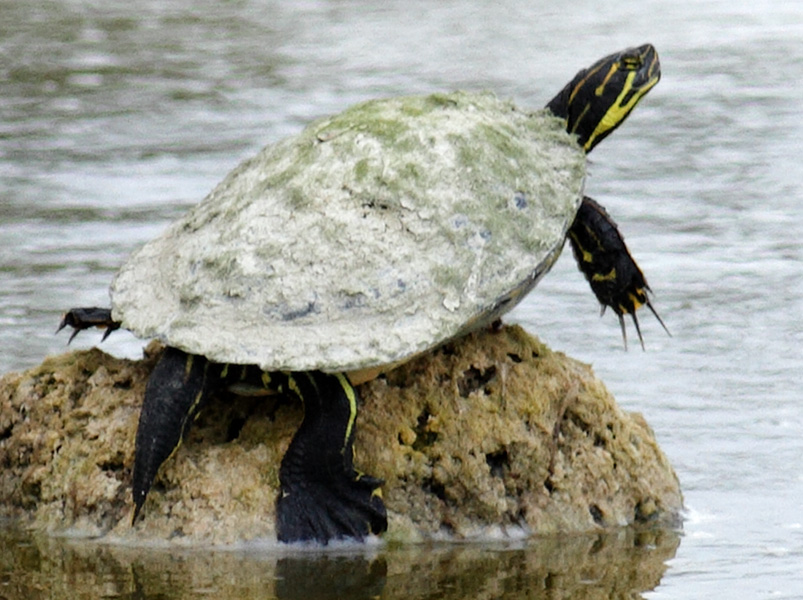
Cooter Turtle
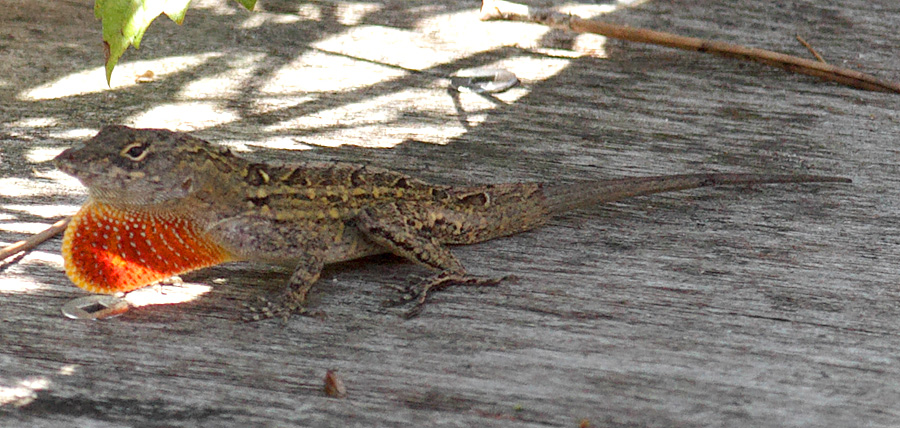
Brown Anole

Green Anole
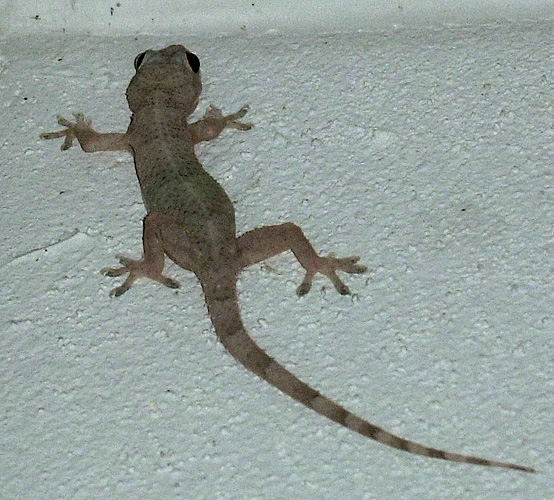
Mediterranean Gecko
There were many birds that I see here in Virginia that winter in Florida. Palm Warblers were everywhere, and when I saw other warblers, they were usually in a mixed flock. I got a quick glimpse of an LLB that I could not identify - it was slender and five to six inches long, had a pale grayish-brown breast and face, and a dark brown back. It was not sparrow-shaped, and most likely was a drab female or juvenile warbler. It most closely matched my reference book drawings of a first fall, female Bachman's Warbler, but as this species is most likely extinct, it was almost certainly a different species - perhaps a brownish Yellow Warbler.
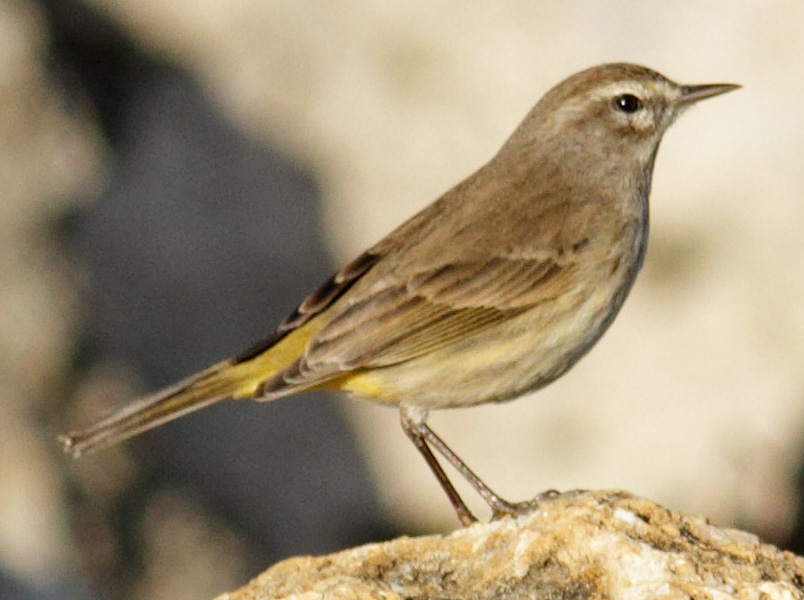
Palm Warbler
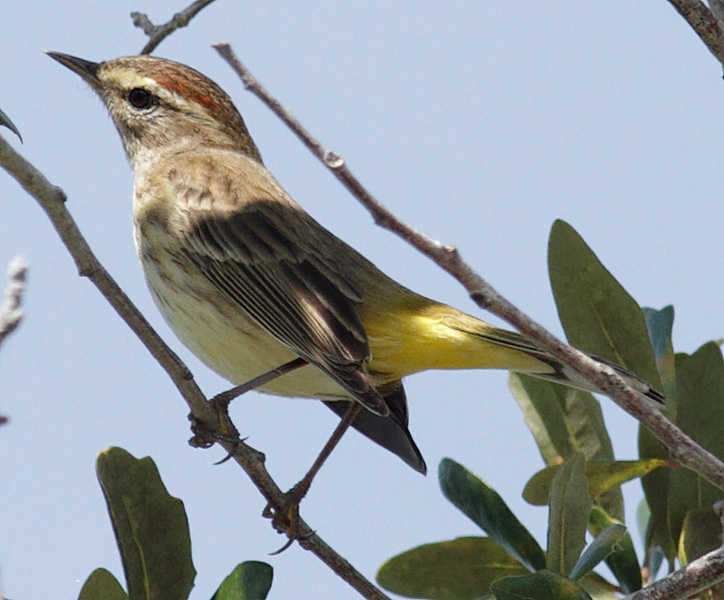
Palm Warbler
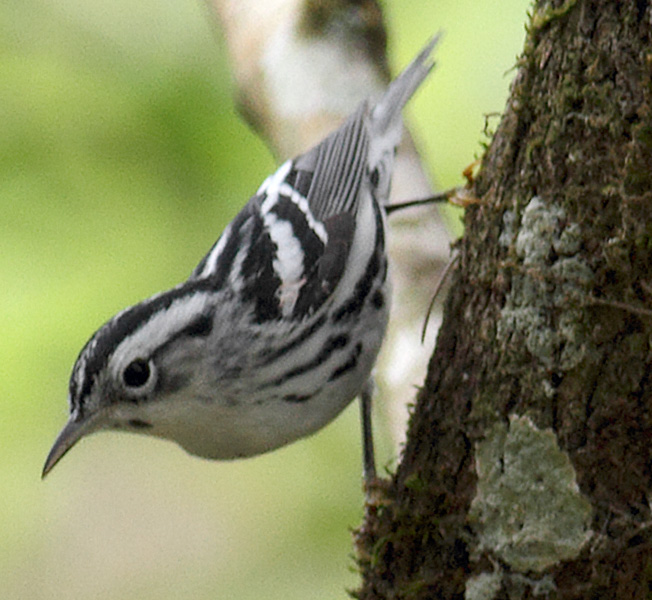
Black and White Warbler
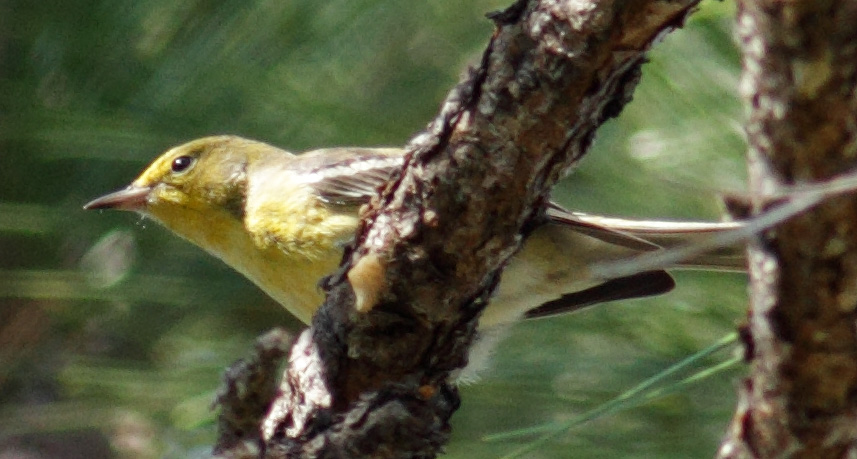
Male Pine Warbler
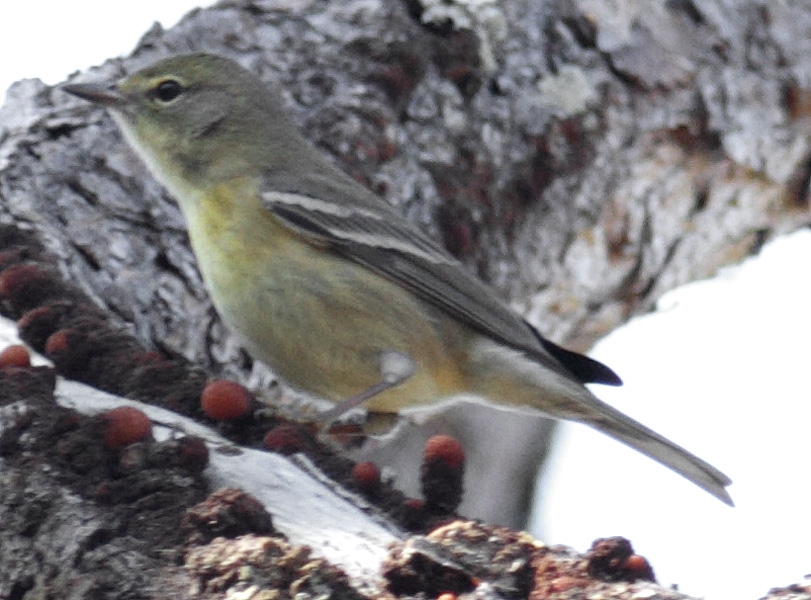
Female Pine Warbler
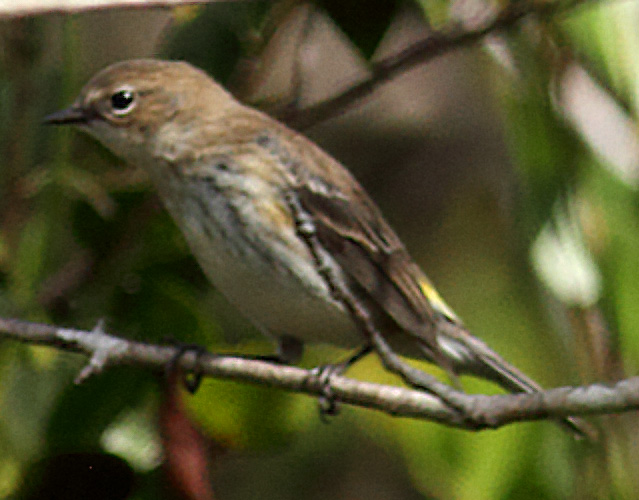
Yellow-rumped Warbler
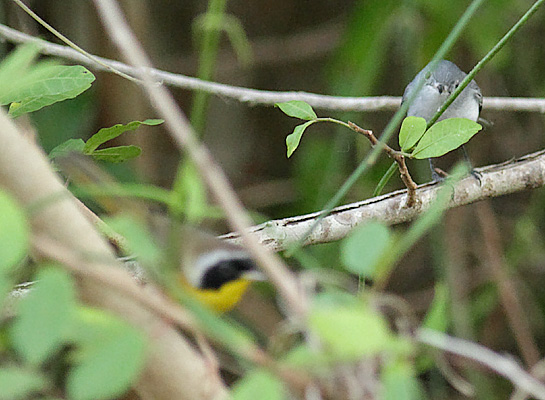
Common Yellowthroat and a Blue-Gray Gnatcatcher
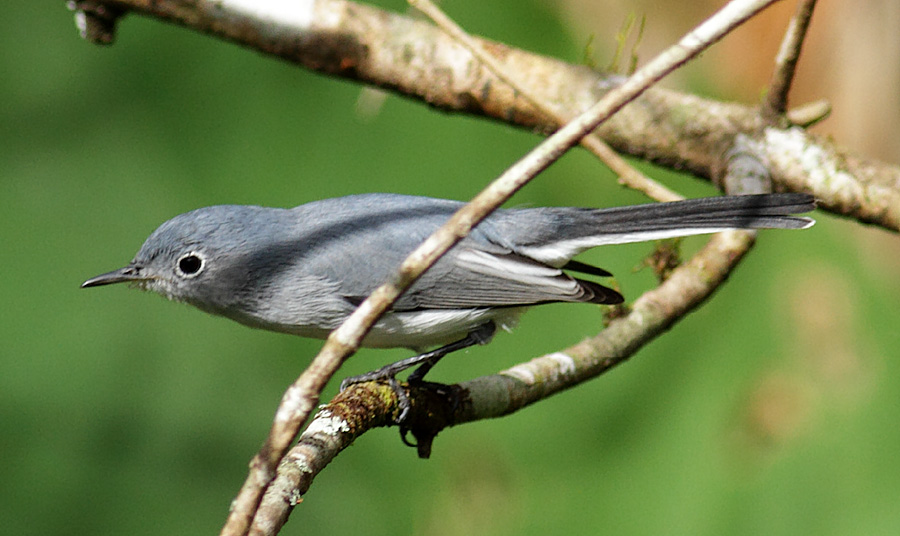
Blue-Gray Gnatcatcher
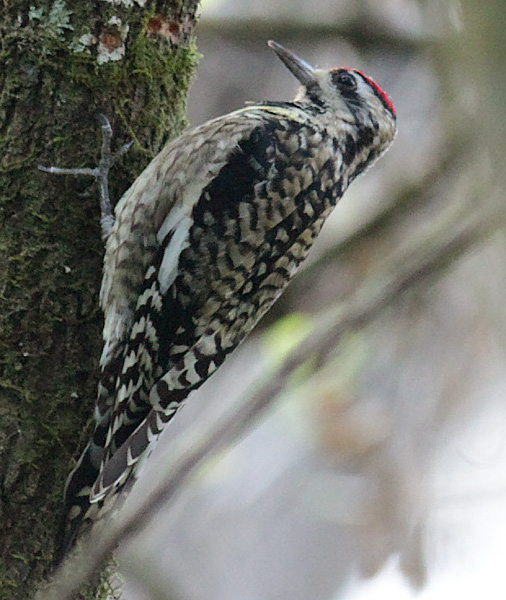
Yellow-bellied Sapsucker

Great-crested Flycatcher
Here are some other interesting wildlife photos.
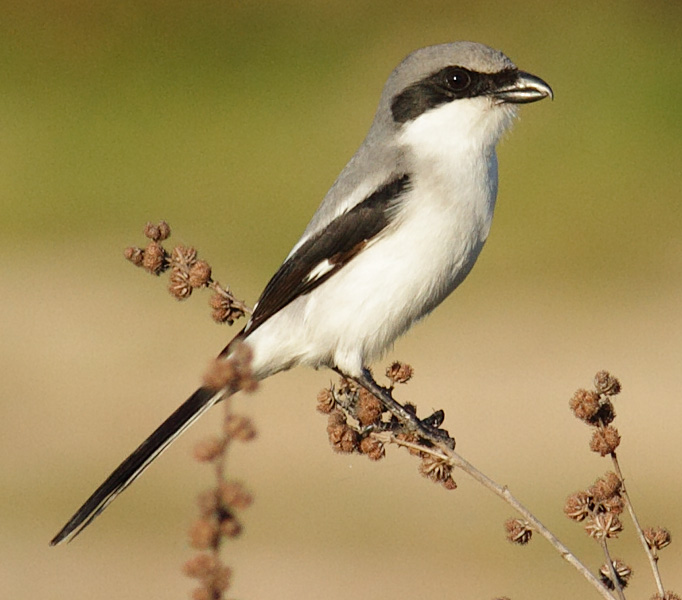
Loggerhead Shrike
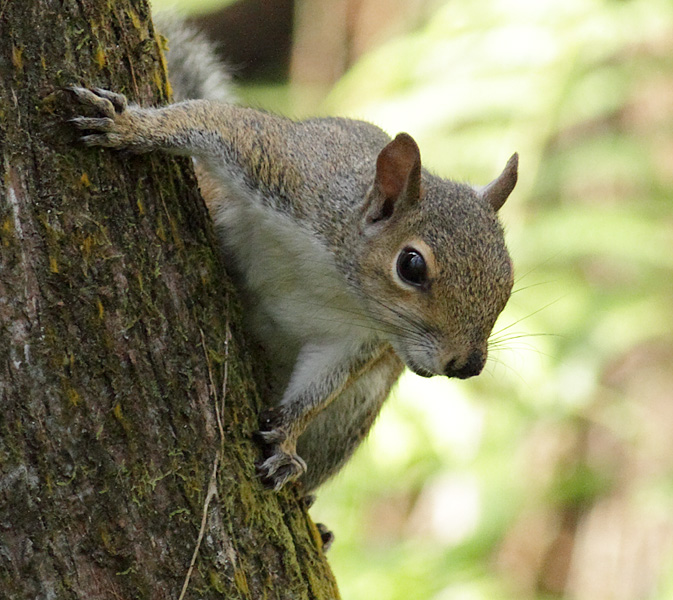
Squirrel

Killdeer
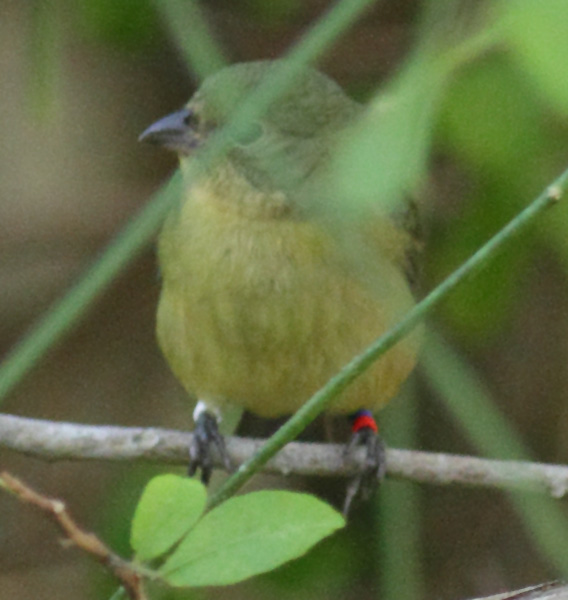
Female Painted Bunting
I was hoping to see a Rufous Hummingbird on our trip, but I only saw two hummingbirds, and unfortunately, both were seen looking in the direction of the brightly lit sky. Ruby-throated Hummingbirds are uncommon in this part of Florida, Rufous Hummingbirds are rare, and Black-chinned Hummingbirds are only occasional. The male that I saw seems to have a very dark chin, and long wings, and the female seems to have rufous wings but non-rufous flanks and vent. I suspect that these features are a function of the poor lighting, so I assume that both of them are Ruby-throated. Other opinions are appreciated.
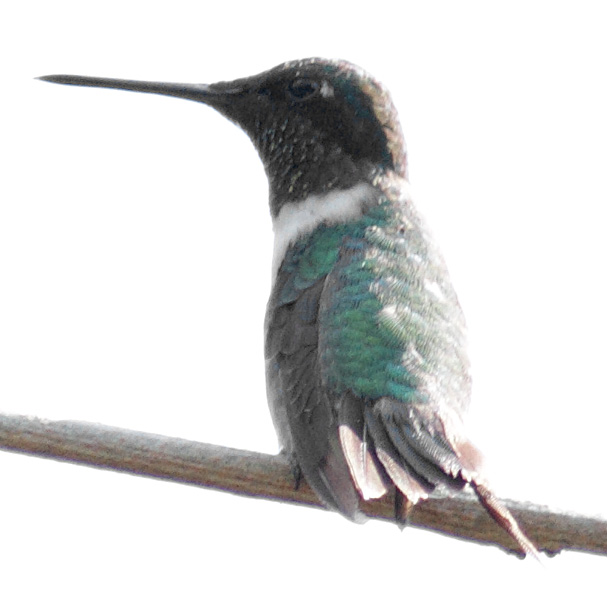
Male Hummingbird
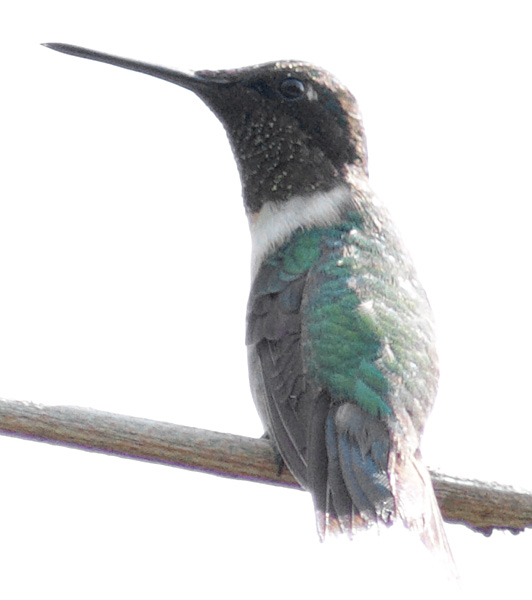
Male Hummingbird

Female Hummingbird
Bird list (84 species; N: Greater Naples area; M: Marco Island; E: Everglades; R: Rookery Bay Reserve; C: Corkscrew Swamp)
Brown Pelican N,R,M Anhinga N,C,E Double-crested Cormorant N,E Great Blue Heron N,E* Great Egret N,C,M,E Snowy Egret N,M,E Reddish Egret M Little Blue Heron N,C,E Tricolored Heron N,M,E Cattle Egret N,E Yellow-crowned Night-Heron R Glossy Ibis N White Ibis N,C,M,E Wood Stork N,E Domestic Muscovey Duck N Canada Goose N Mallard N Mottled Duck N Blue-winged Teal N Hooded Merganser N,M Turkey Vulture N,R,M,E Osprey N,M Cooper's Hawk N,E Red-shouldered Hawk N,C,R,E Red-tailed Hawk N,C,R Bald Eagle N,M American Kestrel N,C Common Gallinule N American Coot N Limpkin N Sandhill Crane N Black-bellied Plover M Killdeer N Semiplamated Plover M Piping plover M Wilson's Plover M Lesser Yellowlegs M Spotted Sandpiper N Willet M Ruddy Turnstone M Dunlin M Western Sandpiper M Least Sandpiper M Long-billed Dowitcher M Short-billed Dowitcher M Laughing Gull M Ring-billed Gull M Royal Tern N Mourning Dove N,C,R Euasian Collared Dove N Burrowing Owl M Ruby-throated(?) Hummingbird N Belted Kingfisher N,E Yellow-bellied Sapsucker C Red-bellied Woodpecker N,E Pileated Woodpecker C Great-crested Flycatcher C,E Loggerhead Shrike N White-eyed Vireo E Blue Jay N Tree Swallow N,R Tufted Titmouse C,R Carolina Wren C Blue-gray Gnatcatcher N,C,E Eastern Bluebird N Gray Catbird C,E Northern Mockingbird N,E,M Starling N Yellow(?) Warbler N Yellow-rumped Warbler N,E Palm Warbler N,C,E,M Pine Warbler N,C Black and White Warbler C,E Common Yellowthroat N Indigo Bunting C Painted Bunting N,C Northern Cardinal C Eastern Meadowlark(?) N Common Grackle N Boat-tailed Grackle N,M |
* white morph